The F-14 Tomcat
Rocco DellerThe F-14 Tomcat is the main defender of the U.S. fleet. With its high speed and ultra-long- range weapons, the F-14 can operate hundreds of miles away from its carrier base. The Tomcat AWG-9 radar can engage six targets at once and its Phoenix missiles can kill hostile bombers 90 miles away, before they can launch their attacks. The Tomcat is one of the world's true "Top Guns!"
A Tomcat aircrew are an elite within an elite. Pilot and backseat Naval Flight Officer act as a carefully coordinated team to wring the best from the awesome combination of performance, sophistication and firepower at their command.
The Tomcat has been one of the great superfighters of the world since its first squadron took to the skies in 1972. It packs a massive punch, performs superbly and is the warplane of choice for many aspiring military pilots. Nothing is more likely to worry an enemy than to know Tomcats are on his track. And yet this tremendous fighting machine can operate from a 350-foot strip of aircraft carrier deck, in all weather and around the clock working with E-2C Hawkeye radar planes and using air-to-air refueling, a squadron of Tomcats can sanitize the airspace 400 miles out from the carrier battle. This ensures that no hostile aircraft will threaten the warships below. Even sea-skimming missiles the can be killed by Tomcats using their Phoenix and AMRAAM missiles.
The fact is that Tomcats and their aircrews have to be good--they are protecting a 10-warship, $15-billion battle group manned by 10,000 sailors projecting as much firepower as the United Kingdom's entire armed forces.
There are many things that make the Grumman F-14 a unique and amazing plane. First of all, there's an age-old problem with fighter planes that the F-14 has conquered. Different speeds and different maneuvers call for wings of different shapes, and no plane can have wings of different shapes, right? Wrong! The Tomcat has "variable sweep wings." This means that the wings move to whatever position is best for flight and maneuvering. They can stretch out and away from the plane for take-off and landing, or they can sweep back and inward for supersonic flight. During flight the wings adjust auto-maticauy for best performance.
Each engine of the F-14 weighs 3,900 pounds and provides up to 28,000 pounds of thrust. The F-14B engine (a modified F-14) is lighter, and provides an additional 16,000 pounds of thrust. The F-14 also has one of the world's most advanced and powerful weapon systems. The system can track 24 targets simultaneously, at a distance of up to 195 miles, and can attack targets with its Phoenix, Sparrow, or Sidewinder missiles. The F-14 was designed with so much firepower in hopes that it would not see much combat- because no enemy would be crazy enough to mess with it!
In conclusion, the F-14 is the most popular fighter plane because it has what it takes to survive. It does air-to-air combat, bombings, and dogfights and anything else you can think of!
Books on the F-14 Tomcat
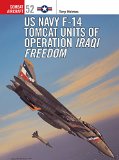
US Navy F-14 Tomcat Units of Operation Iraqi Freedom
Since the limited Desert Fox campaign against Iraq in December 1998, the Tomcat has been integral to virtually all combat operations involving the US Navy in the Arabian Gulf. Indeed, on every carrier deployment to the Persian Gulf since Desert Fox, the F-14 unit(s) on station has ventured into "The Sand Box" over southern Iraq and prosecuted targets operating in contravention to United Nations security council resolutions. This book covers the F-14 Operation Iraqi Freedom actions against battlefield targets and integrated air defence sites, command and control centres, regime leadership targets and military installations in Baghdad, Tikrit, Mosul and Kirkuk.

Tomcat Alley: A Photographic Roll Call of the Grumman F-14 Tomcat
"Tomcat Alley" contains over seven-hundred images depicting the venerable F-14 Tomcat, bureau number by bureau number. Each U.S. Navy Tomcat is traced from date of delivery through February 1998. After a brief introduction, informative captions provide details concerning every Tomcat model, modification, and the fate of each aircraft including those stricken due to operational accidents, retired to the "bone-yard", or resting as "gate guards" at military installations around the country. The majority of Tomcats are shown in full-color with images displaying every paint scheme worn by the F-14, including many water-based schemes applied during various tactical exercises and deployments. Images also include every squadron commander's aircraft, nose art, tail colors, over 150 patches and insignia, bicentennial schemes, and Tomcats which participated in Operation Desert Shield/Desert Storm. Additionally, the Su-22, MiG-23, and Hi-8 killers are depicted along with "movie star" Tomcats from "Final Countdown," "Topgun," and "Executive Decision."
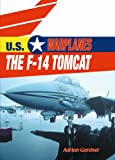
The F-14 Tomcat
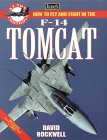
Jane's How to Fly and Fight in the F-14 Tomcat
Jane's At the Controls reveals what it is like to fly and fight in the F-14 Tomcat. Tasked with the long range defense of the US Navy's carrier task forces, the F-14 is now taking on new roles. On the hypothetical mission, set in the near future, you follow a flight of F-14's through all phases of an operation.
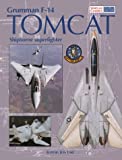
Grumman F-14 Tomcat: Shipborne Superfighter
This is THE book for Grumman's venerable F-14 Tomcat. Sure, some other books like Tomcat Alley by David F. Brown might beat it in the pictorial department, but overall the information in the articles plus the photos it already has beat any other book about the F-14 Tomcat. Everything about the Tomcat until the books date of publication is covered. From the early beginnings of the Navy's need for a Fleet Air Defense F6D Missileer and the VFX competition that Grumman won all the way to the combat record and current strike attack roles. Every F-14 variant is covered, even the ones that were only concept models. Plus great artistic renderings of historic F-14s. A lot of the articles here came from World Air Power Journal's F-14 cover issue back in the early 90s, but the information here is updated such as the squadron deployments, squadron disestablishments and the wars in Eastern Europe. All F-14 Squadrons in the US Navy are covered, and even some stuff about the IIAF/IRIAF F-14s. If all that isn't enough, there's a foreword by F-14 Tomcat pilot D. Stuart Broce, the VF-1 pilot who shot down a Mi-8 helicopter during Desert Storm. It's very interesting and heart warming to read.
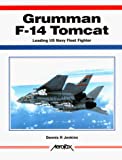
Grumman F-14 Tomcat: Leading Us Navy Fleet Fighter
This addition to the Aerofax series describes all the variants, including the so-called "Bombcat" attack version and the extremely capable F-14D. It covers color schemes, squadrons and markings, and aircraft production details. Lavishly illustrated, it includes close-up details of cockpits and weaponry, giving modelers and enthusiasts superb access to one of the classic jet fighters of all time.
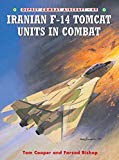
Iranian F-14 Tomcat Units In Combat
So formidable an opponent did the Iraqi airforce consider the F-14 that during the Iran-Iraq war, they ordered their pilots not to engage F-14s and the presence of one in an area was usually enough to empty it of Iraqi aircraft. Officially losses where tiny; only one F-14 was lost in aerial combat (to a MiG-21), one to a control problem and one downed by a ground-to-air missile. This book looks at the F-14's Iranian combat history and includes first hand accounts from the pilots themselves. It will consider key engagements and the central figures involved, illustrating the realities, successes and failures of the Iranian air campaign.